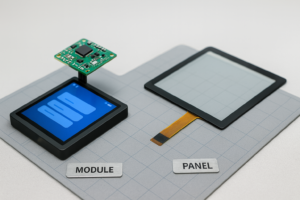Many people may not fully understand the differences between industrial all-in-one computers and regular PCs. In this article, we will explore these differences in depth.
1. Different Definitions
A regular PC is a personal computer that can operate independently and perform specific functions without sharing resources like processing power, disk space, or printers with other computers. An industrial all-in-one computer, however, is a ruggedized and enhanced personal computer specifically designed for industrial environments. In simple terms, it serves as a reliable industrial controller in harsh conditions. While both types of computers operate on the same principles, their designs and performance optimizations differ based on their intended use.
2. Different Application Areas
Regular PCs mainly serve personal or commercial needs. In contrast, industrial all-in-one computers find wide applications across various sectors. These include industrial control sites, healthcare, environmental protection, big data applications, intelligent transportation, security monitoring, voice interaction, automated terminal services, CNC machinery, subways, finance, petrochemicals, metallurgy, and more.
3. Advantages of Industrial All-in-One Computers
- Environment: Regular PCs are typically consumer-grade and do not have high physical environment requirements. Industrial all-in-one computers, however, are designed for harsher environments. They often feature rugged designs, including dustproof, moisture-proof, corrosion-resistant, and radiation-resistant capabilities.
- Functionality: Industrial all-in-one computers are built for specific needs and come equipped with specialized functions. Regular PCs aim to meet general consumer demands and offer multiple functionalities.
- Stability and Reliability: Industrial all-in-one computers require high stability. Regular PCs focus on meeting functional demands with cutting-edge performance. Industrial computers can withstand dust, smoke, extreme temperatures, humidity, vibrations, and corrosion. They boast a Mean Time To Failure (MTTF) of over 100,000 hours, while regular PCs have an MTTF of only 10,000 to 15,000 hours.
- Cooling Solutions: Industrial all-in-one computers prioritize cooling efficiency, whereas regular PCs often focus on aesthetics.
- Real-Time Performance: Industrial all-in-one computers provide real-time online monitoring and control of industrial processes. They quickly respond to changes in operating conditions, ensuring system stability.
- Expandability: Featuring a motherboard and CPU card structure, industrial all-in-one computers offer robust input and output capabilities. They allow for the expansion of multiple boards and connections to various peripherals, controllers, video surveillance systems, and vehicle detection devices.
- Compatibility: Industrial all-in-one computers can utilize both ISA and PC resources while supporting various operating systems, multiple assembly languages, and multitasking operating systems.
4. Price Differences
When comparing prices, industrial all-in-one computers tend to be more expensive than regular PCs. This is due to their specialized nature and lower production volumes, leading to customized pricing.
5. Optimization Directions
- Core Functions: Regular PCs focus on optimizing performance and price. Industrial all-in-one computers prioritize durability in harsh environments and high reliability.
- Structure: Regular PCs are designed for easy assembly and user-friendliness. Industrial all-in-one computers emphasize ease of maintenance and resistance to shocks and vibrations.
- Power Supply: Regular PCs aim for silent, efficient, and low-cost operation. In contrast, industrial all-in-one computers prioritize reliability, durability, and even redundancy.
- Storage: Regular PCs offer high-speed and low-cost storage solutions. Industrial all-in-one computers provide high reliability, fault tolerance, and data recovery options.
- Appearance: Regular PCs aim to be aesthetically pleasing, lightweight, and economical. Industrial all-in-one computers are built to be sturdy, secure, and equipped with installation fixtures, shock-absorbing designs, and protection against interference, dust, and even explosions.
Through this overview, we hope you now have a clearer understanding of the operational principles and differences between industrial all-in-one computers and regular PCs. If you are looking to purchase an industrial all-in-one computer, feel free to search for Everglory Ltd for consultation!
.png)



